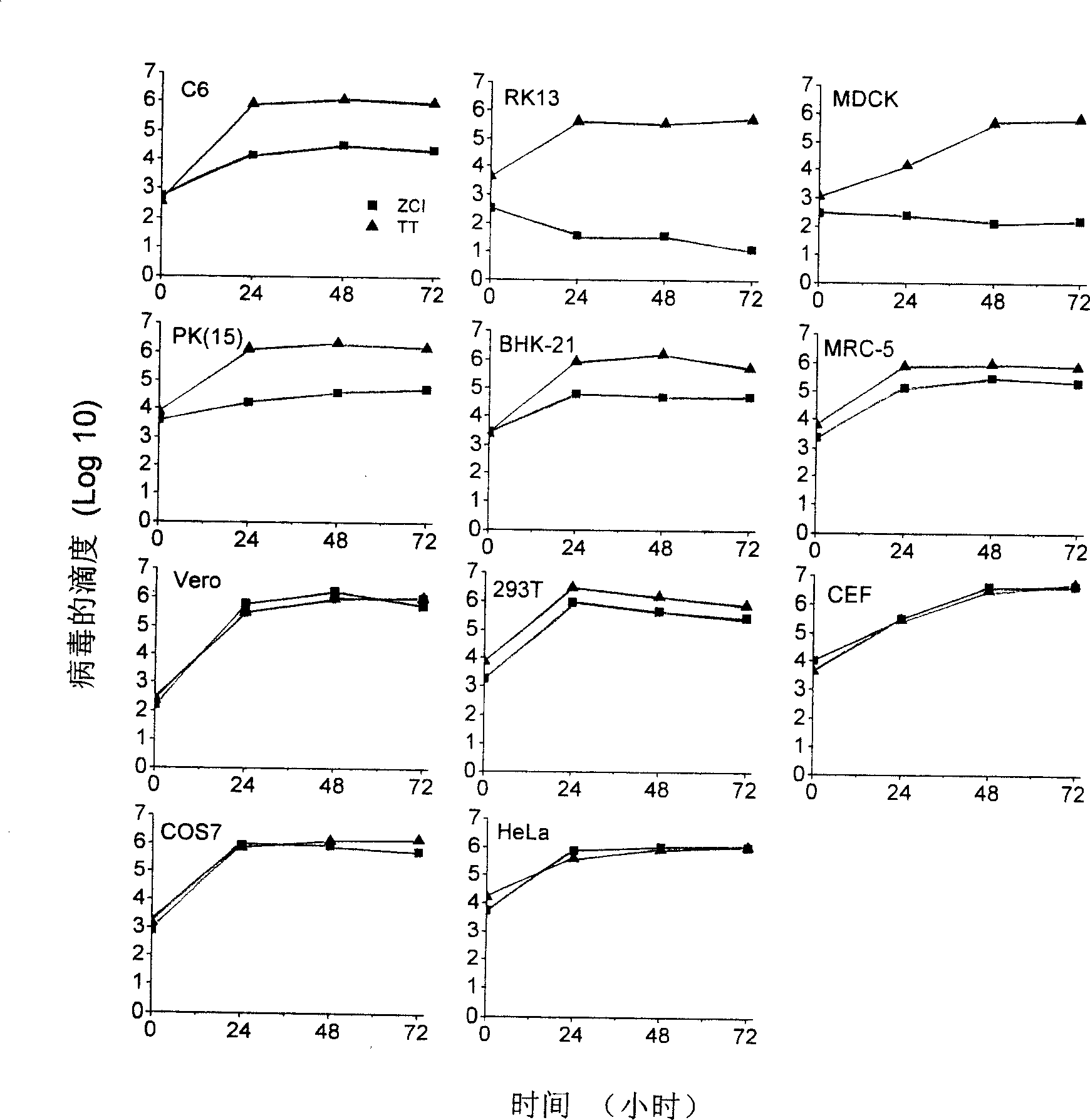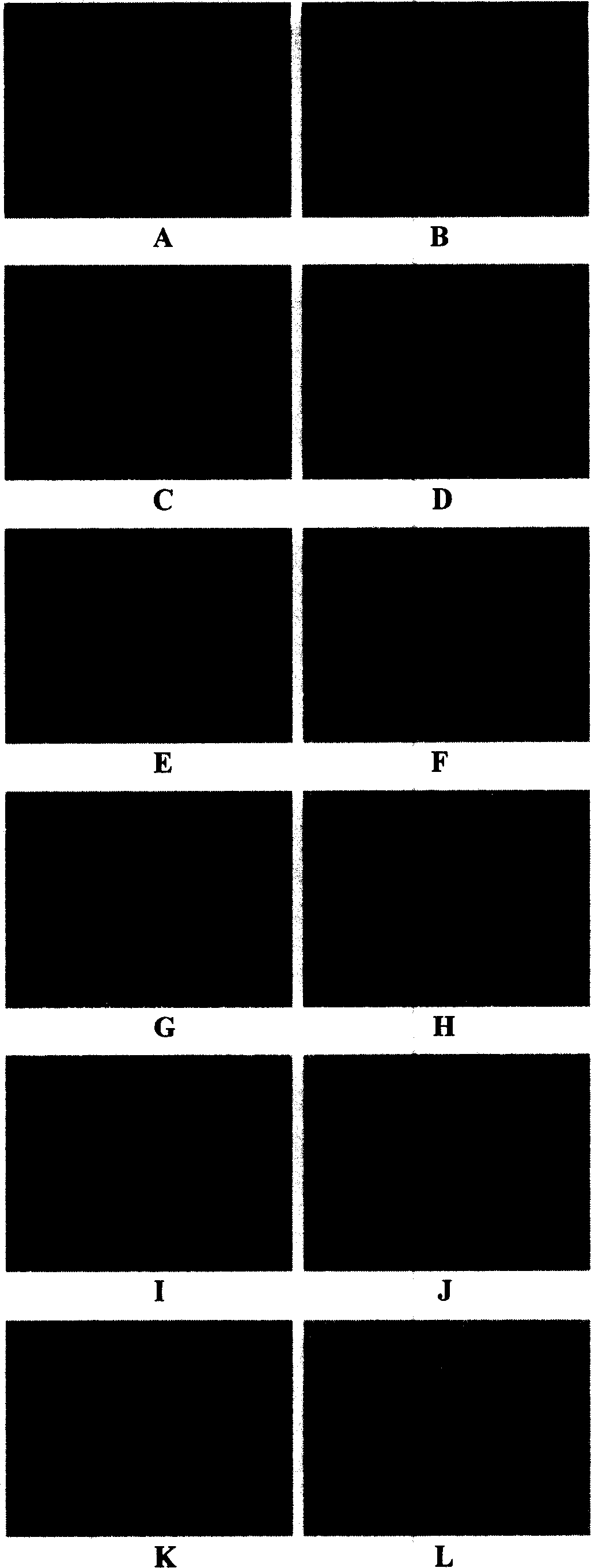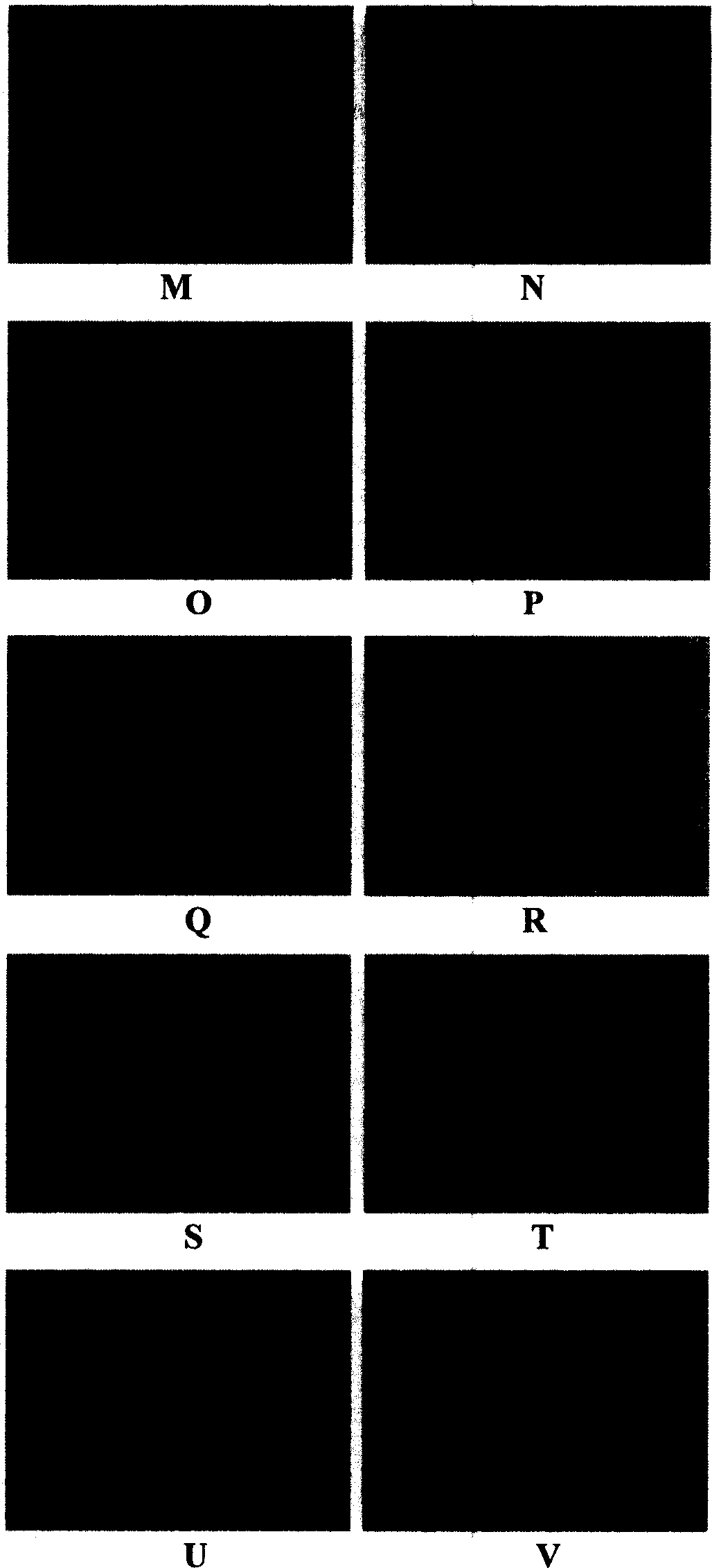Attenuated vaccinia virus Tiantan strain vector and its preparation and application
A vaccinia virus vector, vaccinia virus technology, applied in the direction of botany equipment and methods, biochemical equipment and methods, applications, etc., can solve the problems of non-existence and attenuation
- Summary
- Abstract
- Description
- Claims
- Application Information
AI Technical Summary
Problems solved by technology
Method used
Image
Examples
Embodiment 1
[0137] Replication kinetics and viral replication-related properties of attenuated vaccinia virus in animal cells.
[0138] 1) The replication kinetics of viruses in animal cells:
[0139] In order to understand the replication ability of attenuated vaccinia virus in animal cells, animal cells from different types and tissues, including human cell lines, were selected to conduct research experiments on virus replication kinetics. At the same time, the replication kinetics curve of the parental virus Tiantan strain in these cells was studied under the same conditions in order to be able to compare with the replication properties of the attenuated vaccinia virus.
[0140] The compared viruses are: highly attenuated vaccinia tiantan virus ZCI and wild vaccinia tiantan virus TT. The selected animal cells and their types, sources and cell types are listed in Table 1. Among them, the primary chicken embryonic cell CEF is a self-made cell. Although it is indicated as the primary ce...
Embodiment 2
[0177] Genetic stability of foreign gene insertion and expression in highly attenuated vaccinia virus
[0178] Safe and effective viral vectors must have stable biological properties, and the stability of foreign gene insertion and expression is particularly important. Infect monolayer Vero cells with highly attenuated vaccinia virus (HA gene coding region has been inserted into exogenous GFP gene) at 0.01 MOI, remove the medium after 90 minutes of adsorption, wash the cells once with DMEM medium containing 10% NCS, add Fresh culture with 10% NCS based on 37°C, 5% CO 2 Cultured in an incubator for 48 hours, the virus-infected cells and supernatant were harvested, frozen and thawed three times, and the titer of the virus was determined in Vero cells. Vero cells were then infected at the same MOI. In this way, the attenuated vaccinia virus was continuously passaged in Vero cells for 6 times. The first-generation and sixth-generation attenuated vaccinia virus were infected and...
Embodiment 3
[0181] Toxicity comparison of attenuated vaccinia virus vector and wild Tiantan virus in model animal mice
[0182] In order to identify the characteristics of reduced virulence of the attenuated vaccinia virus in vivo, the highly attenuated vaccinia virus ZCI and its parent virus, the wild Tiantan strain TT, were tested in two different ways through the nasal cavity and the cranial cavity using the BALB / c mouse model system. Toxicity in mice. The BALB / c mouse system is an animal model system widely used in the world, and has been proven to be sensitive to vaccinia virus (Betakova et al., 2000, The vaccinia virus A14.5L gene encodes a hydrophobic 53-amino-acid virion membrane protein that enhances virulence in mice and is conserved among vertebratepoxviruses. J Virol, 74(9), 4085-92; Lee, M.S.et al., Molecular attenuation of vaccinenia virus: mutant generation and animal characterization. J Virol, 66(5), 2617-30; Zhang.W.H.et al., Vaccinia virus F12L protein is required for a...
PUM
 Login to View More
Login to View More Abstract
Description
Claims
Application Information
 Login to View More
Login to View More - R&D
- Intellectual Property
- Life Sciences
- Materials
- Tech Scout
- Unparalleled Data Quality
- Higher Quality Content
- 60% Fewer Hallucinations
Browse by: Latest US Patents, China's latest patents, Technical Efficacy Thesaurus, Application Domain, Technology Topic, Popular Technical Reports.
© 2025 PatSnap. All rights reserved.Legal|Privacy policy|Modern Slavery Act Transparency Statement|Sitemap|About US| Contact US: help@patsnap.com



